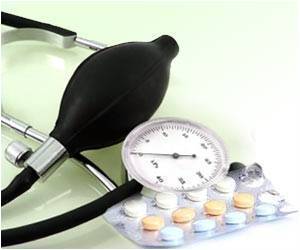Researchers at UT Southwestern Medical Center have found that C-Reactive Protein plays a direct role in inducing hypertension
Researchers at UT Southwestern Medical Center have found that C-Reactive Protein plays a direct role in inducing hypertension.
'We have discovered that C-Reactive Protein (CRP) is not merely a marker of the risk of hypertension, it actually induces hypertension,' said Dr. Wanpen Vongpatanasin, associate professor of internal medicine and lead author of the study appearing in the February issue of Circulation.The researchers studied mice with an engineered gene for CRP that was under the regulation of a second gene responsive to changes in dietary carbohydrate intake. The levels of circulating CRP, which is produced by the liver, were directly manipulated by altering the mice's diets, and the effect on blood pressure was determined. In this manner the actions of CRP were segregated from the actions of other mediators of inflammation.
'We found that when we switched on the gene that causes increases in CRP, the blood pressure went up, and when we turned off the gene and CRP levels went down, the blood pressure fell. Diet changes in the control mice had no effect, indicating that the blood pressure responses were due to CRP,' said Dr. Vongpatanasin. 'The cause of elevated blood pressure induced by CRP was also determined.'
Clinical studies over the past decade have suggested that chronically elevated levels of CRP indicate inflammation that puts an individual at risk for hypertension and other cardiovascular ailments such as hardening of the arteries. The mice in the latest study were supersensitive to angiotensin II, which is a major circulating factor regulating blood pressure via arterial constriction. This was due to alterations in key proteins in the vascular wall that are involved with angiotensin II.
Also, the researchers discovered that the initiating mechanism is a lack of the key signaling molecule nitric oxide in the artery wall, which has multiple beneficial roles in the cardiovascular system, as well as made a connection between nitric oxide and the proteins responsible for angiotensin II activity.
'Whether these same processes are operative in humans is yet to be determined,' said Dr. Vongpatanasin. 'We are also pursuing follow-up studies to further understand better how CRP causes the high blood pressure in the mice.'
Advertisement
'We have uncovered a series of mechanisms that link a circulating factor that rises with chronic inflammation, obesity and aging to the regulation of blood pressure,' said Dr. Philip Shaul, professor of pediatrics at UT Southwestern and the study's senior author. 'Doing so provides a new perspective on how these conditions have a negative impact on cardiovascular health.'
Advertisement
PRI/S








